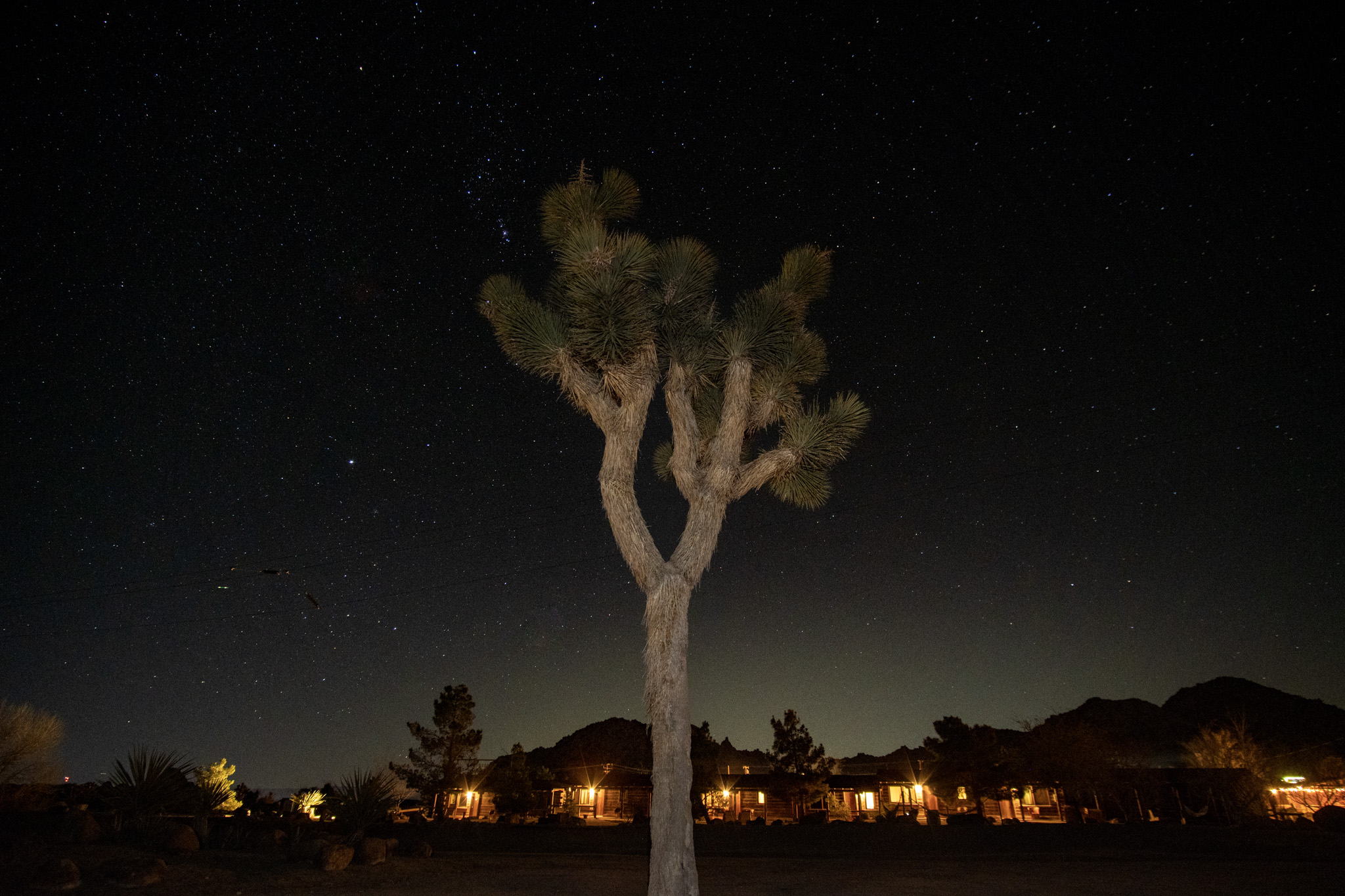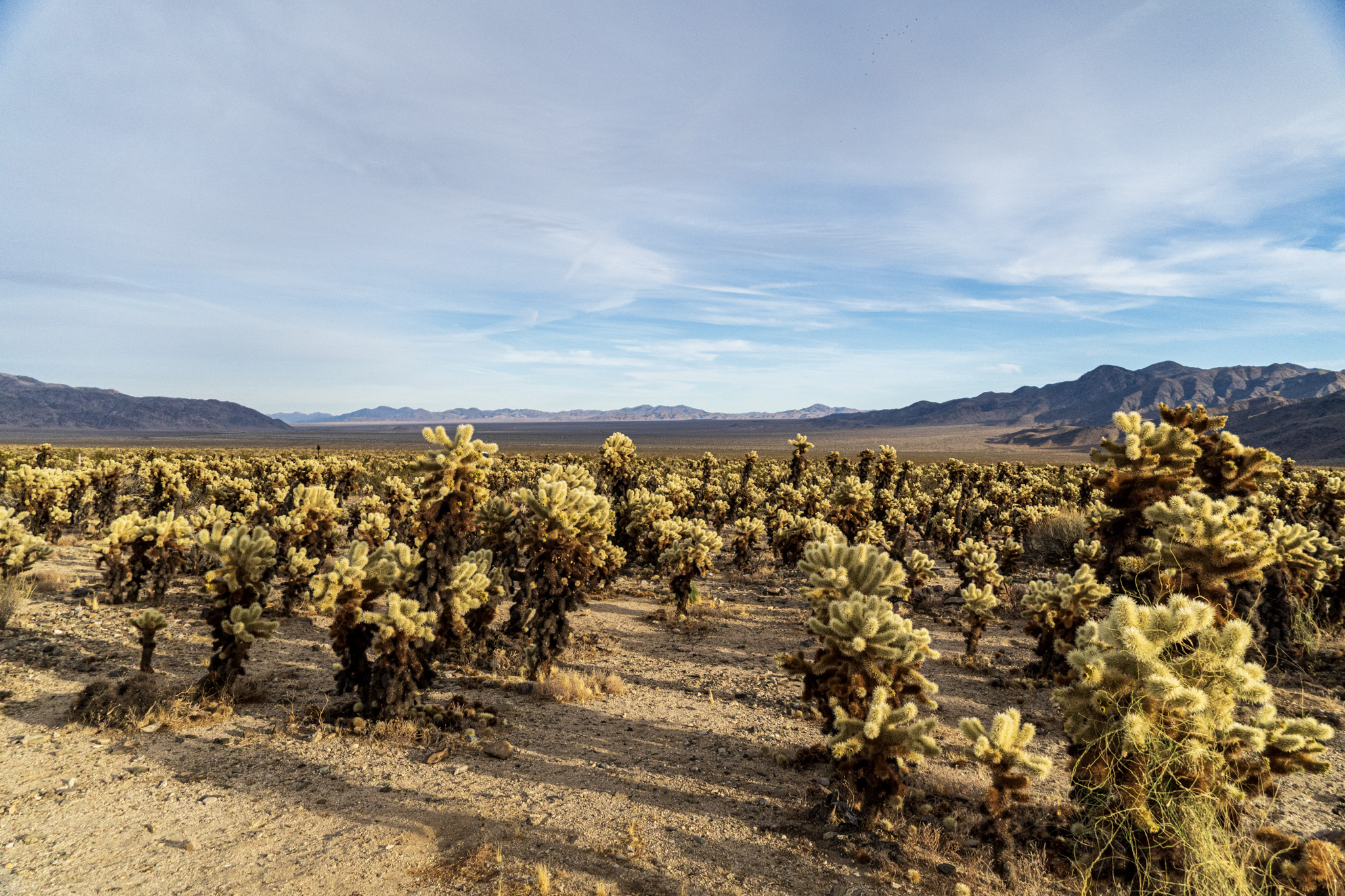Joshing Ya

One feature of the Vision Pro that reviewers and buyers alike seem to really appreciate is the ability to dial in an environment. Casey Liss joked on Mastodon:
How long until a YouTuber goes to Haleakala, Joshua Tree, Yosemite, and Mount Hood, and finds the exact points the Vision Pro environments were captured?
Bonus points for the moon, obviously.
I’m sure someone is going to do it (definitely not the moon part), but the environments aren’t purely photographic things. That’s not a judgement just that if you got as close as you could to what was depicted you’d still never get it exact, so don’t sweat it.
It does make me think about how much I love the places on the environments list that I have been to. When I did my demo I didn’t really feel like I was in those environments. That’s only because I’m viewing that environment in the context of my own experience, and faulty memories. I’ve been to Haleakalā, Joshua Tree, and Yosemite, but I didn’t feel as direct a connection to those places as I would have liked. The exception being Joshua Tree, which was the closest to matching my feelings about the place even if I didn’t feel like I ever stood in that exact spot.
It’s like looking at a good publicity photo of places you’ve vacationed as opposed to a personal photo you took which have attached meaning, but aren’t as cleanly executed or specific.
Maybe we should all go to Joshua Tree? I’ve been a lot, but you’re probably some East Coast bum, like Casey, and haven’t really thought about going. Let me give you some travel tips.
Getting to Joshua Tree
The best months to go to Joshua Tree are between October and May. The summers are simply too hot. It can get very, very cold, especially at night, in the winter, but it’s much more comfortable. It can, occasionally, snow, but you really have to race to catch a glimpse because it won’t stick.

Joshua Tree National Park, and the adjacent Yucca Valley, sit above Palm Springs and the rest of the Coachella Valley. You can fly in to Palm Springs, and rent a car for the short drive up to Joshua Tree, you can travel from Ontario (California, not Canada) International Airport, or one of the further Los Angeles area airports, and sit in a snarl of traffic for hours.
Even if you’re local enough that you’ll want to drive to Joshua Tree, you’re better off not going there and back in the same day. Definitely plan to spend the night in Yucca Valley. There’s no great, big lodge inside of the National Park, like some of the others, but you can camp, if you’re the weird type of person who wants to camp in a desert and use chemical toilets.

Pioneertown Motel is a great place to crash for those funky desert vibes, and it even has Joshua trees on the property. It’s great for stargazing at night because it’s beyond the light pollution (and pollution-pollution) of the LA Metro area.

Pioneertown itself is a collection of old west facades from when the area was used to make Westerns. They have stores selling various tchotchkes, but it’s not a grandiose theme park.
For food you have The Red Dog Saloon, and Pappy and Harriet’s. Both are in Pioneertown itself, and easy walks. Taking the road back to 29 Palms Highway lands you at Frontier Cafe which is a good (but potentially busy!) spot to get coffee, breakfast, and sandwiches to take with you to the park, or just stroll around the shops at the highway intersection.
The Park
Arrive at Joshua Tree National Park early and use your National Parks pass to enter. There are three entrances, and only the most popular West Entrance on Quail Springs Road has an entry booth. They usually have one lane set aside for passholders, but when the non-passholder lane backs it up it backs up down the road that leads to the park and you’re just stuck.
The other two park entrances don’t have booths monitoring entry because they’re far less popular, but you must display your pass or pay for entry. Sometimes we’ll start at Cottonwood Springs Road off the 10 and wind through to Quail Springs Road, or vice versa. Usually we’ll just go in and out of the Quail Springs Road entrance since it’s the closest to where we’d be staying, and other services. Those other entrances do have visitor centers.
Cellphone service in the park is almost non-existant except for the area by the West Entrance, and the Quail Springs picnic area, so get your offline maps downloaded.
Hikes
My boyfriend’s favorite (and punishing) hike is Ryan Mountain Trail. You are completely exposed to the elements so remember your sunscreen, and windbreakers in the winter. The view from the top is fantastic, but it’ll really wipe you out to get up there. Unless you’re an avid hiker you’ll probably be done for the day after that. This is also a popular trail so you’ll be stopping to let people pass, or listening to assholes lugging bluetooth speakers on the trail.


My favorite stuff is all the stuff that’s not really a hike. Which is a cop out, I know, but it’s nice to just experience the place without hitting cardio goals. That includes the Cap Rock Nature Trail where you meander around a winding trail that has little placards explaining what various plants are, and there are huge boulders up around you.

The Baker Dam Nature Trail is similar, if a little larger, and includes an old, not-that-impressive dam.
Minerva Hoyt Trail (but mostly just its parking lot) is probably the largest expanse of Joshua trees you’re going to see. You’re just surrounded by the towering things.

Keys View is far out of the way, and really only offers a vantage point looking down at the Coachella Valley and San Jacinto Mountains. That’s not a bad thing, it’s just a long drive and then you’ll get back in the car and drive back the way you came, so you might not be satisfied if you have limited time.
Another quiet spot for a snack, or just a rest, is where Live Oak Road comes off of Park Boulevard (Quail Springs Road turns into Park Boulevard inside the park). There’s nothing impressive here but it’s quiet because most people don’t have a reason to stop here. You might also see some ground squirrels.
My favorite spot in the whole park is the Cholla Cactus Garden. It’s closer to the Cottonwood Springs entrance than the West Entrance so it’s quite a drive, but worth it, especially in the late afternoon when the sun starts to get low, or just dip, behind the mountains. This spot in the park is covered with cholla cactus (and bees, a lot of bees). Which gives you a very different vibe from the towering Joshua trees. I’d love it if Apple captured the Cholla Cactus Garden as an environment for the Vision Pro, but only if you could walk around it’s little path.

Maybe let us change viewpoints along the path? Like Myst, or the real estate web site version of Myst: Matterport. Anyway, walking through something more human-scale is part of the experience.
Hike. Die. Repeat.
You can spend a few days in the Joshua Tree going in and out of the park, and the area vibing to the funky desert. Have a spiritual awakening, or whatever, I don’t care. When you finish you can pop down to Palm Springs for tiki cocktails and a swim before you head home.
I’m not sure it will increase the connection you have when you look at the Joshua Tree environment in visionOS, but it’ll certainly give you a more three dimensional view of the place.
Category: text